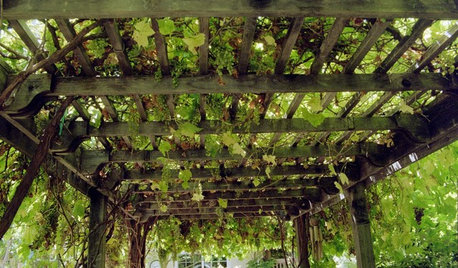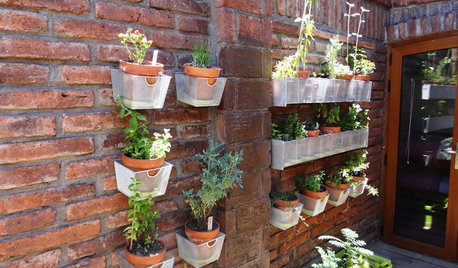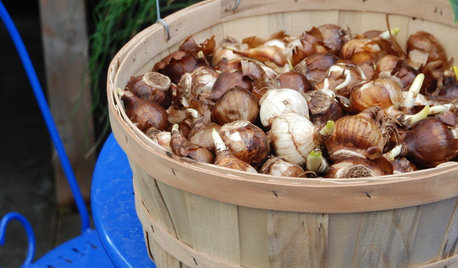successful interplanting with tomatoes?
emmers_m
10 years ago
Related Stories

EDIBLE GARDENSSummer Crops: How to Grow Tomatoes
Plant tomato seedlings in spring for one of the best tastes of summer, fresh from your backyard
Full Story
LIFEKitchen Traditions: Tomato Season Meets a Family Legacy
Somewhere a Sicilian great-great-grandmother is smiling at a bowl of American-made sauce
Full Story
GARDENING AND LANDSCAPINGVertical Gardens Raise the Limits for Landscapes
Turn a small garden space into a towering success with an upward-bound collection of edible delights
Full Story
FALL GARDENINGReflecting on a Gardening Year
Mistakes and successes, surprises and comforts. The garden helps us grow in new ways every year
Full Story
EDIBLE GARDENS8 Surefire Vegetables and Herbs for Beginning Gardeners
Learn the edible plants that are popular and easy to grow in a backyard or container garden
Full Story
EDIBLE GARDENS12 Essential Herbs for Your Edible Garden
Make home cooking and drinks even better with herbs plucked from your own backyard or windowsill pot
Full Story
EDIBLE GARDENSHouzz Call: Where Are the Craziest Places You Grow Edibles?
Basil in a bathtub, spinach stacked up a wall ... If your edibles occupy an odd spot, we’d like to know
Full Story
REGIONAL GARDEN GUIDESNortheast Gardener's February Checklist
Follow your passions during the month of love with bursts of your favorite colors and fragrances via indoor plants
Full Story
FARM YOUR YARD6 Things to Know Before You Start Growing Your Own Food
It takes time and practice, but growing edibles in the suburbs or city is possible with smart prep and patience
Full Story
GARDENING GUIDESOrganic Matters: Thwart Insect Pests With Trap Crops
Add a few sacrificial plants to your garden to lure insects away from the harvest
Full StoryMore Discussions







ddsack
aniajs
Related Professionals
Palm Springs Landscape Architects & Landscape Designers · Belmont Landscape Contractors · Cockeysville Landscape Contractors · East Patchogue Landscape Contractors · Hoffman Estates Landscape Contractors · Mission Viejo Landscape Contractors · Beloit General Contractors · Fairview General Contractors · Klahanie General Contractors · Leon Valley General Contractors · Texas City General Contractors · Toledo General Contractors · Waianae General Contractors · Northglenn Decks, Patios & Outdoor Enclosures · Eustis Decks, Patios & Outdoor Enclosuresseysonn
bobincentralMA
emmers_mOriginal Author
labradors_gw
labradors_gw
labradors_gw